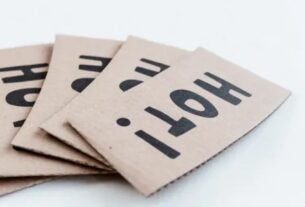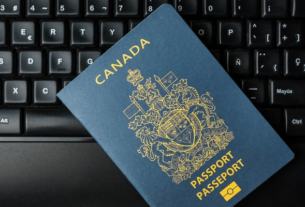Creating an effective wayfinding signs system is crucial for guiding visitors and ensuring a smooth experience within any large building or complex. This is particularly important in Washington, DC, where the city’s diverse range of associations, embassies, marketing companies, government agencies, universities, hotels with conference centers, venues, and museums demand clear and efficient navigation solutions. Here’s a comprehensive guide to developing an effective wayfinding system in Washington, DC.
Understanding Wayfinding Signs
Wayfinding signs are designed to help people navigate spaces easily and intuitively. An effective wayfinding system goes beyond simple directional arrows; it incorporates a variety of signage elements to create a coherent and user-friendly navigation experience. For organizations in Washington, DC, it’s essential to consider local needs and contexts when designing these systems.
Key Components of an Effective Wayfinding System
Wall Wraps
Wall wraps are a versatile solution for enhancing wayfinding in any interior space. By covering large wall surfaces with graphics, maps, or directional information, wall wraps provide clear visual cues and contribute to the overall aesthetic of the space. In Washington, DC’s museums and government buildings, wall wraps can showcase historical maps or informational graphics that align with the building’s purpose, while also aiding in navigation.
Dimensional Letters
Dimensional letters add a three-dimensional element to signage that can improve visibility and readability. These signs are particularly useful for identifying key areas such as reception desks, conference rooms, or emergency exits. In the context of Washington, DC’s conference centers and universities, dimensional letters can be used to create visually appealing and functional signs that guide visitors effectively.
Standoff Mounted Signs
Standoff mounted signs are mounted away from the wall using spacers, creating a floating effect that can enhance both visibility and aesthetics. These signs are ideal for areas where you want to highlight important information or landmarks, such as entryways, departments, or exhibits in museums. In Washington, DC’s hotels and embassies, Standoff Mounted Signs can provide a sophisticated look while maintaining clarity in navigation.
Floor Graphics
Floor graphics are a dynamic way to direct foot traffic and emphasize important pathways within a building. They can be used for wayfinding in corridors, lobbies, or large open spaces. In Washington, DC’s venues and conference centers, floor graphics can guide attendees to specific areas or events, making them an essential component of a comprehensive wayfinding system.
Vinyl Banners
Vinyl banners are flexible and durable, making them suitable for both temporary and permanent signage needs. They are particularly useful for directing people to specific events, exhibits, or information points within a building. In the context of Washington, DC, vinyl banners can be utilized in hotels, universities, and museums to provide clear directions or advertise important events.
Meter Boards
Meter boards are a practical option for displaying schedules, maps, or important notices. They are often used in high-traffic areas where frequent updates are necessary. For organizations in Washington, DC, such as government agencies or conference centers, meter boards can offer real-time information and help manage the flow of people more efficiently.
Designing Your Wayfinding System
When creating an effective wayfinding signs system in Washington, DC, it’s crucial to consider several design principles to ensure the system meets the needs of its users:
Clarity and Simplicity
The primary goal of wayfinding signage is to provide clear and straightforward directions. Avoid overly complex language or designs that could confuse users. Use universally recognizable symbols and a consistent design style across all signs.
Consistency
Consistency in design helps users quickly understand and follow directions. Ensure that all signs follow the same color scheme, typography, and iconography. This uniformity helps users associate certain visual elements with specific types of information, making navigation more intuitive.
Visibility and Readability
Choose high-contrast color combinations and large, legible fonts to ensure that signs are easy to read from a distance. Consider the lighting conditions of the area where the signs will be placed and make sure that your signs are visible under different lighting scenarios.
Integration with Building Design
Your wayfinding signs should complement the overall design of the building. In Washington, DC, where historical and modern architectural styles coexist, ensure that your signage integrates seamlessly with the building’s aesthetic while serving its functional purpose.
Accessibility
Ensure that your wayfinding system is accessible to all users, including those with disabilities. Use braille and tactile elements for the visually impaired, and ensure that all signs are placed at appropriate heights and locations for easy reach and visibility.
Implementing the System
After designing your wayfinding system, the next step is implementation. Work with experienced sign makers and installers who understand the unique requirements of Washington, DC buildings. Proper installation is crucial for ensuring that all signs are correctly positioned and securely mounted.
Additionally, consider conducting a pilot test of your wayfinding system with a small group of users. Gather feedback to identify any areas for improvement and make necessary adjustments before fully rolling out the system.
Conclusion
Creating an effective Wayfinding Signs System in Washington, DC, involves careful planning, design, and implementation. By incorporating elements such as wall wraps, dimensional letters, standoff mounted signs, floor graphics, vinyl banners, and meter boards, you can develop a comprehensive system that enhances navigation and improves the overall experience for visitors. Remember to focus on clarity, consistency, visibility, and accessibility to ensure that your wayfinding system effectively guides users through your space. With the right approach, your wayfinding system will not only help people find their way but also enhance the functionality and aesthetic appeal of your building.



